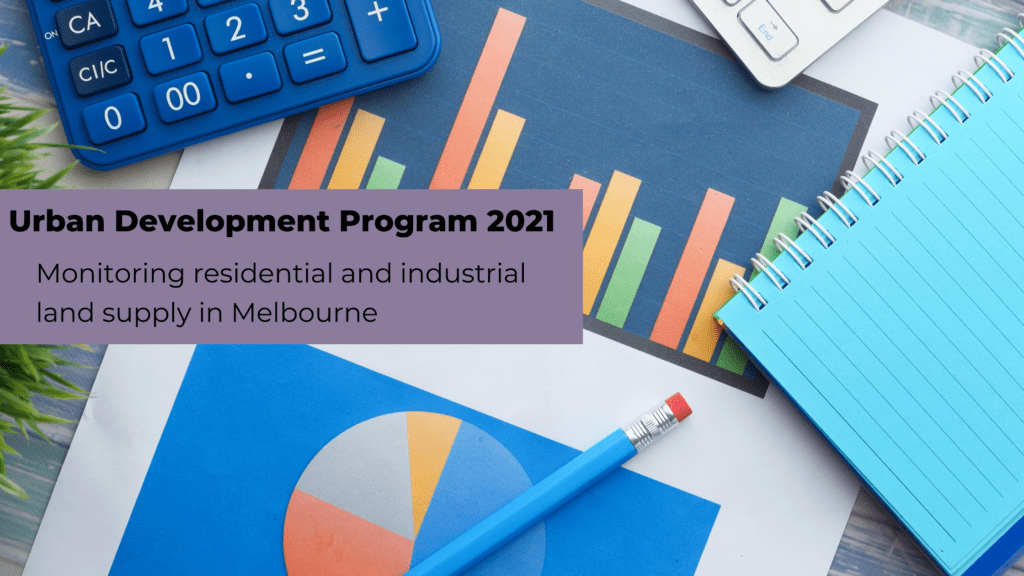10 Aug Melbourne Land Supply and Developments for 2021 Released

The Urban Development Program is an initiative of the State government to monitor residential and industrial development and land supply. It pools a range of key datasets and information together to provide a yearly update on:
- Supply of greenfield residential land, both in Melbourne’s growth areas and in key regional centres
- Major residential projects in established areas
- Supply of industrial land
The latest information (2021) on these areas has just been released. You can access this information including a mapping program here. You can access the current data as well as previous yearly datasets, dating back to 2012.
A summary of the key information obtained is discussed below.
Greenfield Land Supply in Melbourne
If you want to read more about what Greenfield is, I have discussed it in this post which defines some common planning terms.
Melbourne’s seven growth areas are within the Cardinia, Casey, Hume, Melton, Mitchell, Whittlesea and Wyndham municipalities. Some quick statistics for you:
- Around 18-23 years of land supply available
- The most greenfield land is currently in the Western growth areas (Wyndham and Melton)
- Wyndham and Melton also had the greatest number of proposed lots, nearly half of the total
- There has been a significant decline in size of re-subdivided lots over recent years, with 89% of lots being under 500sqm in 2021
Within the UDP you can also drill down into statistics on the zoned and unzoned supply for each Growth area.
Major Residential Projects
Major redevelopment sites are sites that were previously used for commercial, industrial, institutional or residential purposes and are able to accommodate 10 or more dwellings.
A summary of key statistics for major redevelopment for 2021:
- Inner and middle ring Councils account for 85% of the projects in the pipeline
- 19,788 dwellings were completed last year
- City of Melbourne had both the highest level of dwellings in the pipeline and having been completed
- 80% of the developments in the pipeline are anticipated to be buildings of four or more storeys
Within the UDP you can explore further details on major redevelopment projects including the planning policy that underpins major residential projects, how the data is collected and the supply of major projects by local government area.
Industrial Land Supply
A summary of key information for industrial land in 2021:
- There is 26,164 ha of industrially zoned land in metropolitan Melbourne, with 7,856 ha of it vacant
- 58% of the vacant supply is within State Significant Industrial Precincts (SSIP)
- The Southern SSIP has the least vacant land and is anticpated to be exhausted in mid 2020s
- In 2021 no new land was rezoned for industrial purposes, however nearly 140 ha of industrial land was rezoned to a non-industrial zone
Within the UDP you can research more details on the industrial land supply since 2001 including details of where vacant industrial land is and the consumption of industrial land.
Regional Greenfield Land Supply
The UDP discusses the shifting of Victoria’s population pattern since 2020. The state’s population has declined overall, but regional Victoria has had twice as many people relocate from Melbourne compared to before the pandemic. Understandably this shift in population growth has put some areas under pressure. One source to supply this population growth is new greenfield housing around the edges of regional cities and existing settlements. The UDP identifies how much greenfield land is available and identifies the pipeline of land as it is transformed from farm paddocks to housing lots.
The UDP focuses on key regional areas including Ballarat, Geelong, Mildura and Surf Coast. For each of the nine regions that it explores it identifies:
- Greenfield supply
- Recent population trends
- Size of housing lots
- How fragmented the greenfield land is
The data and mapping tool available in the UDP will be of assistance for developers and land owners looking to research what to target for future residential and industrial development.

